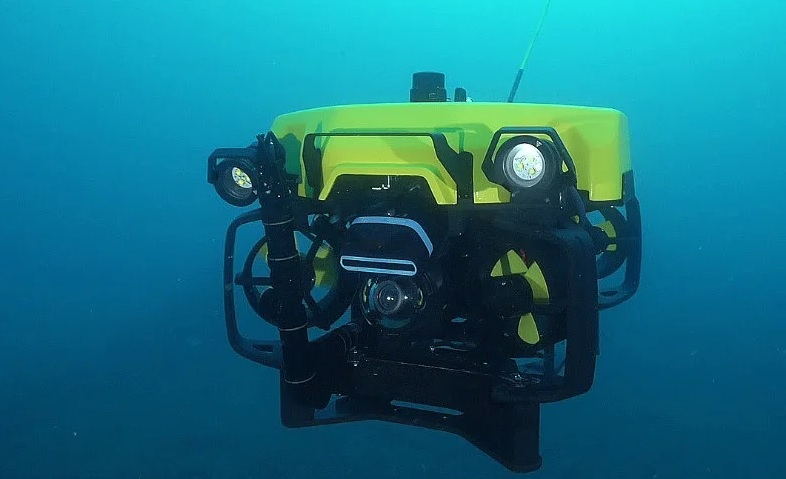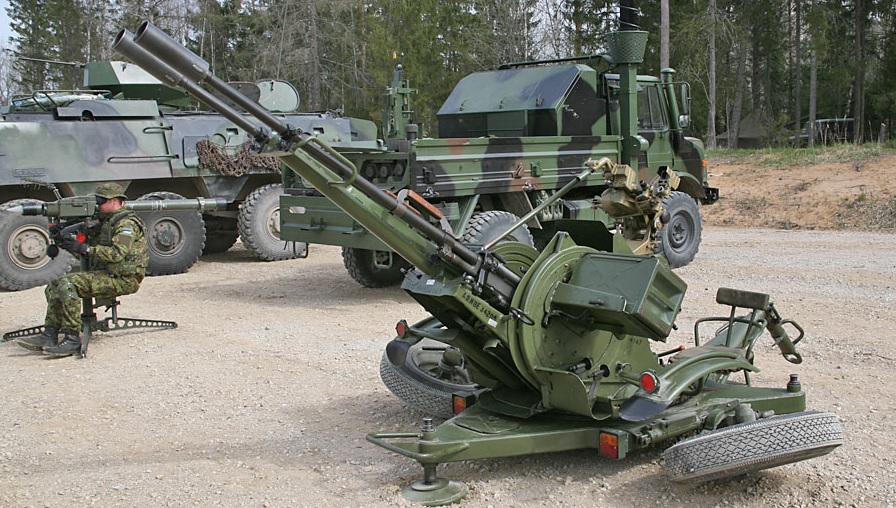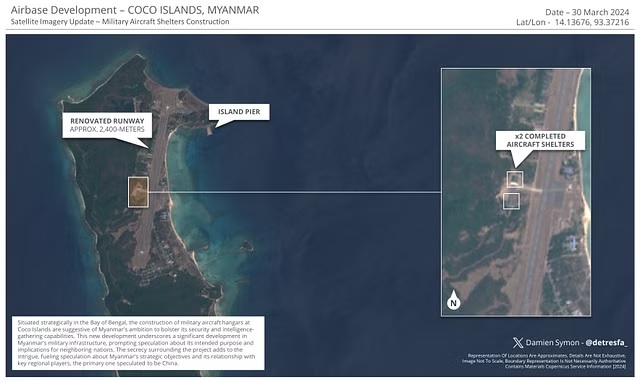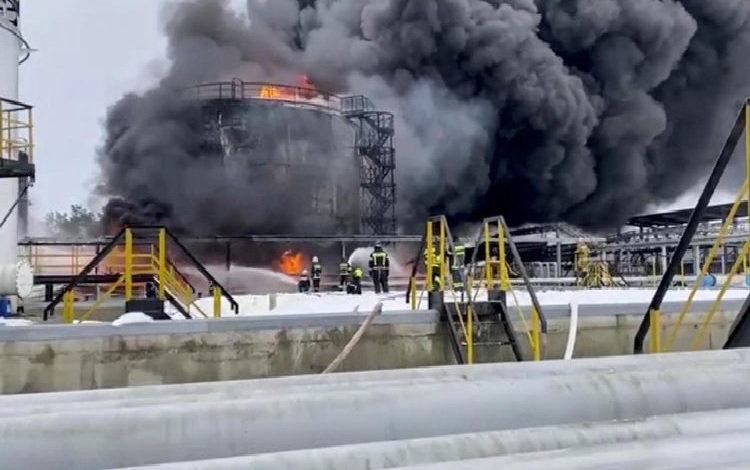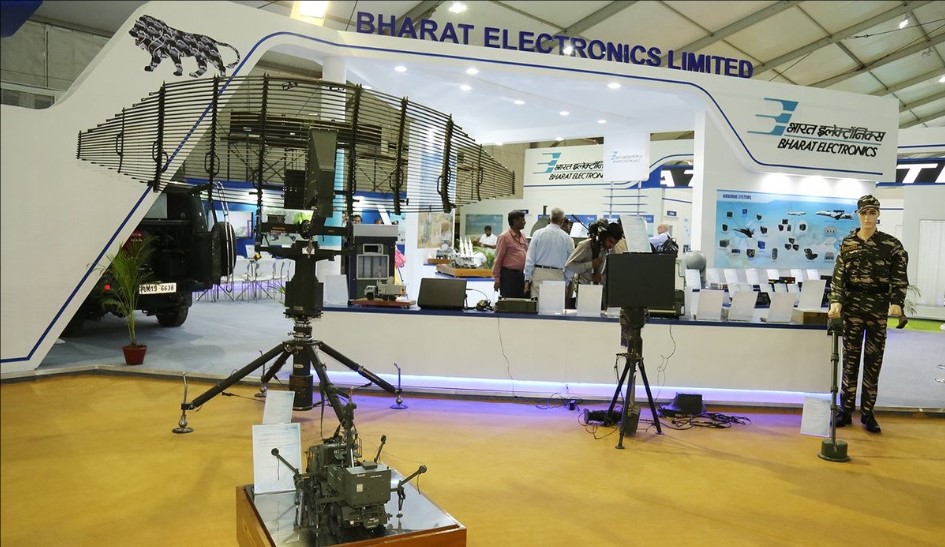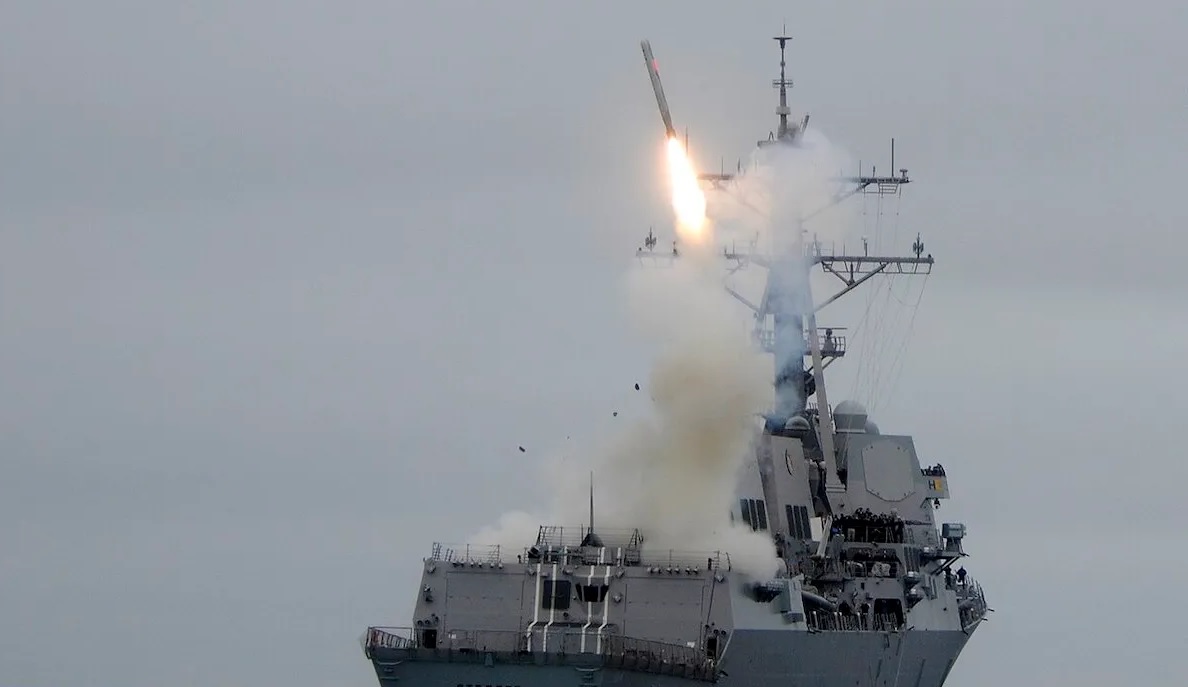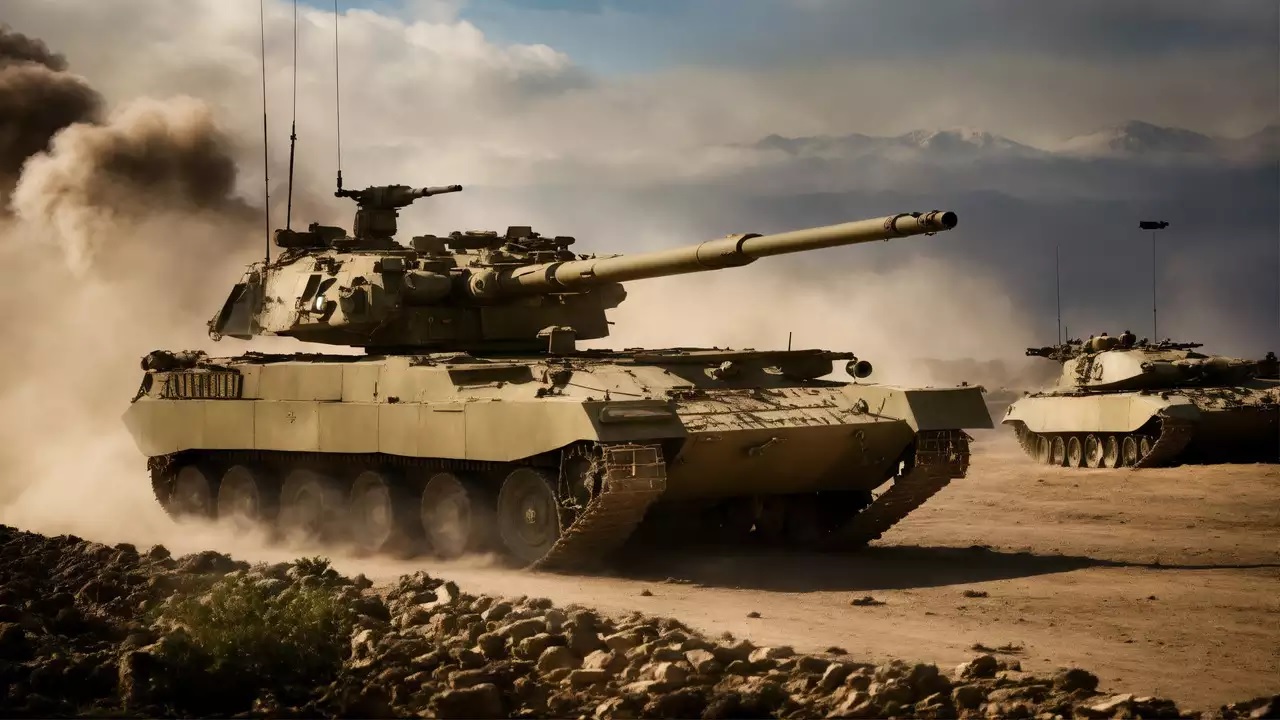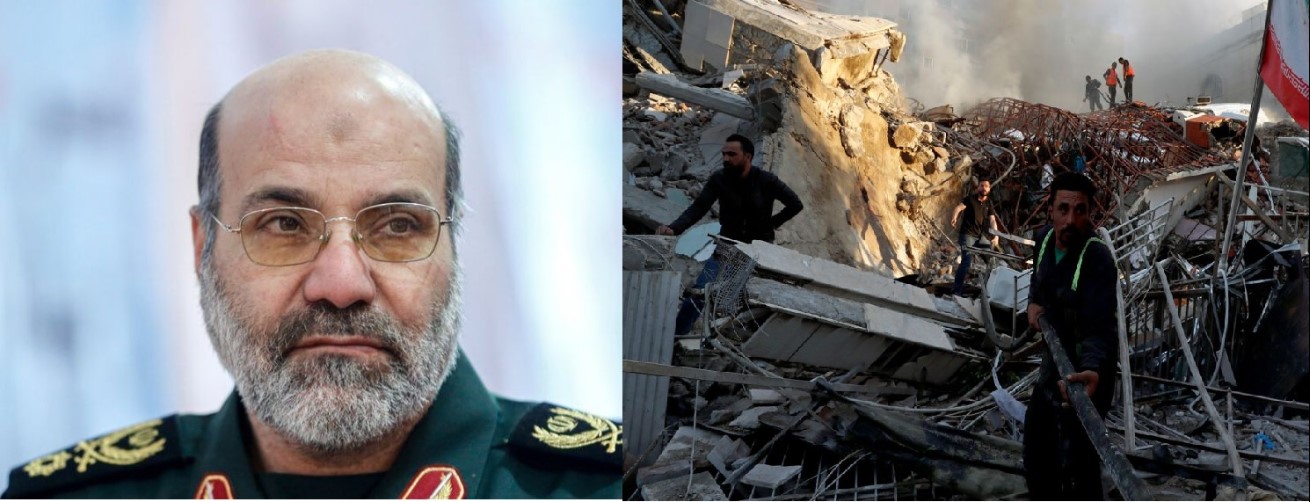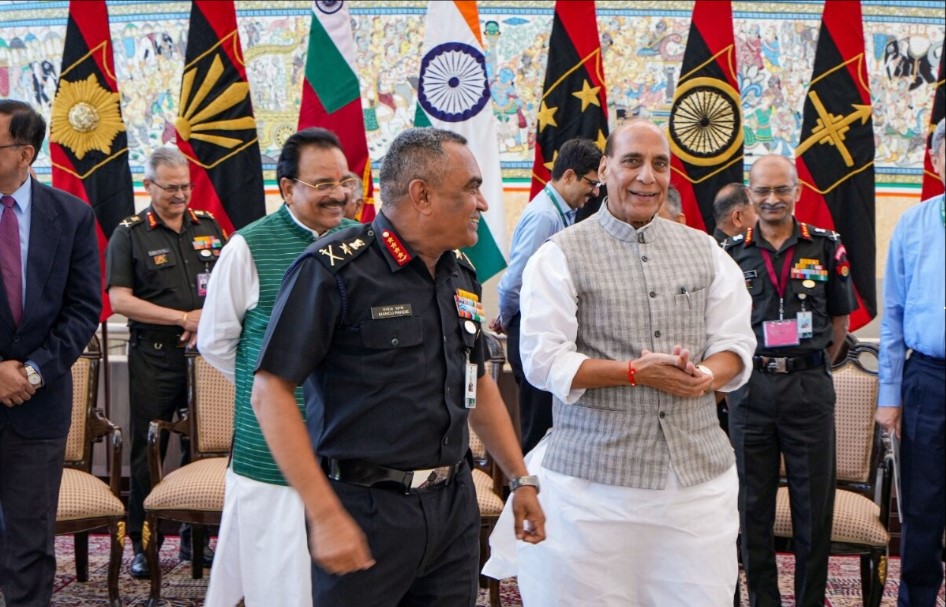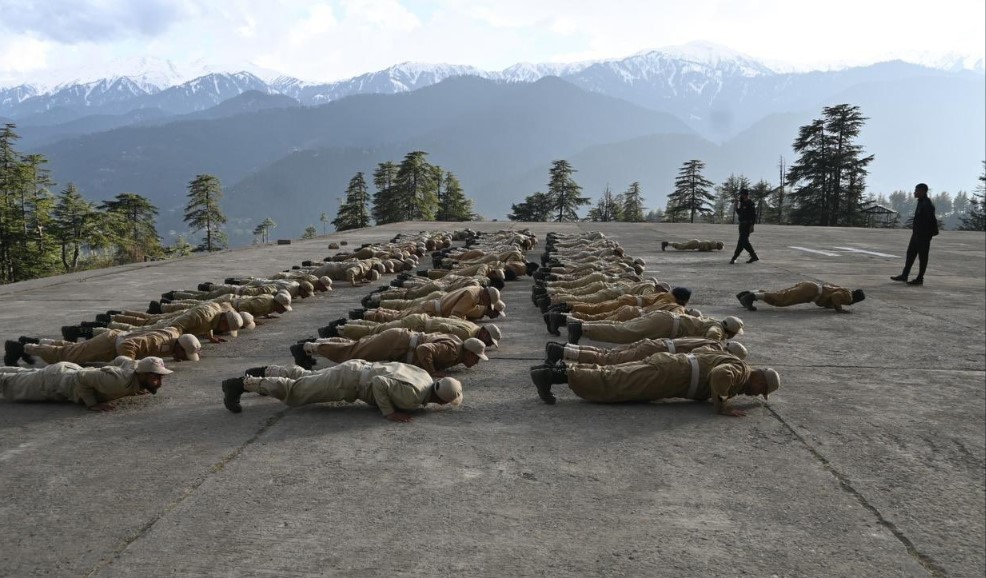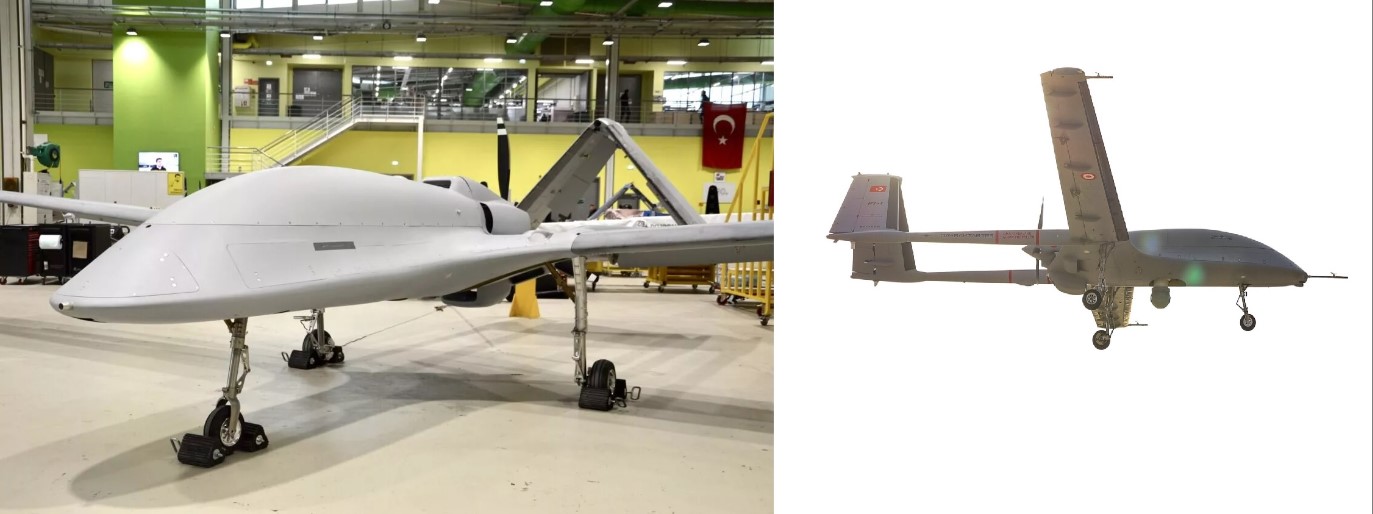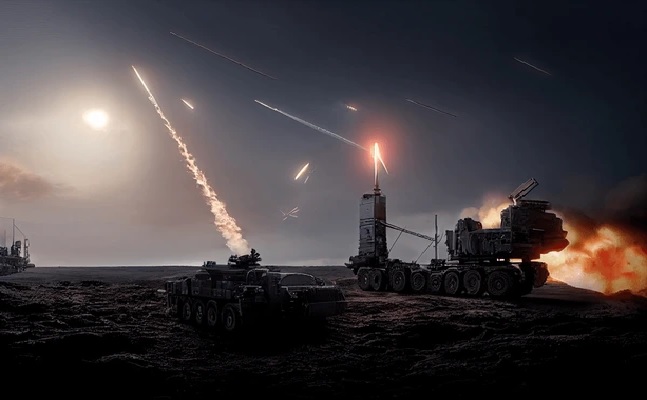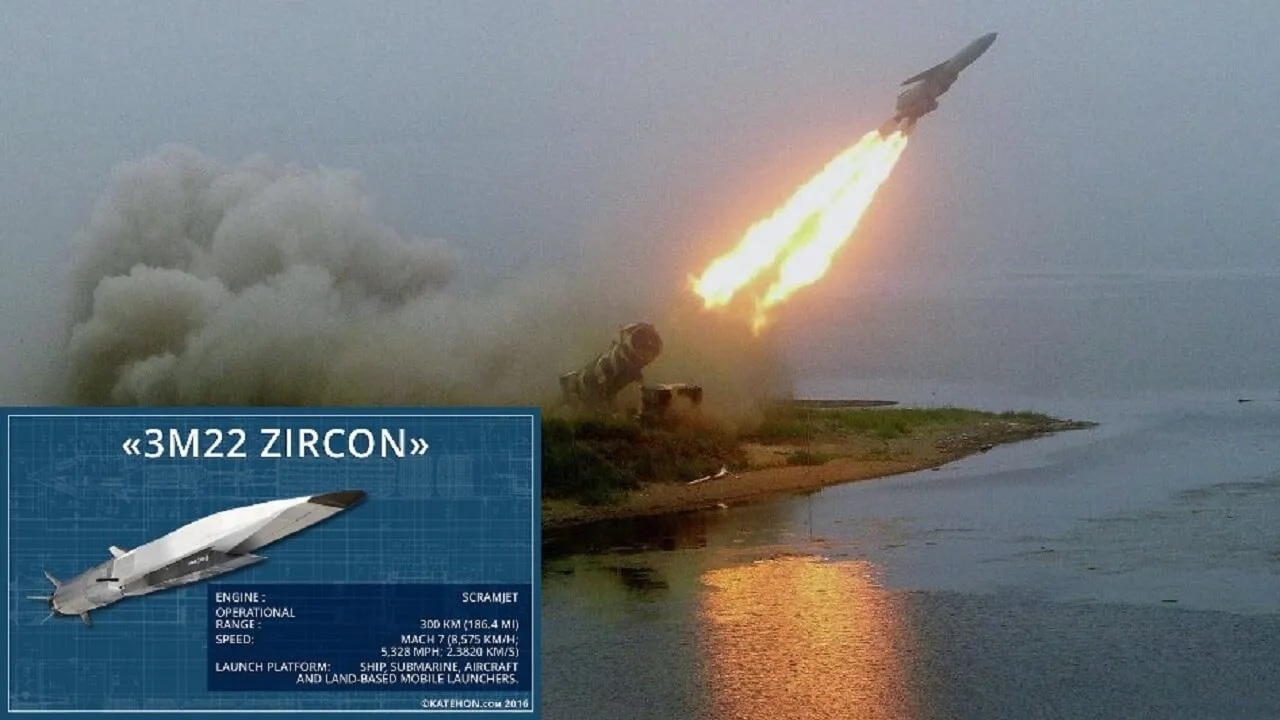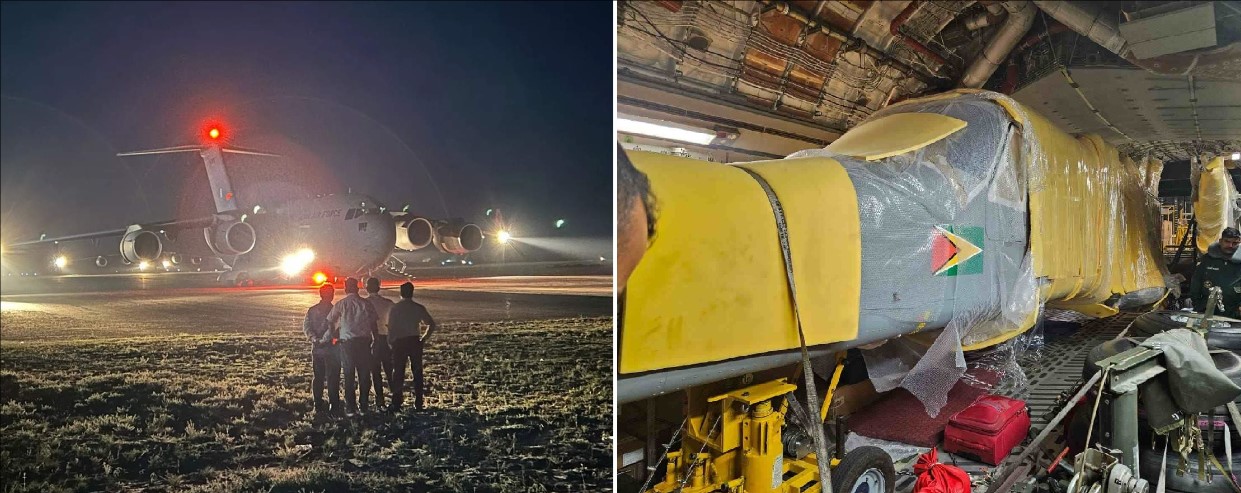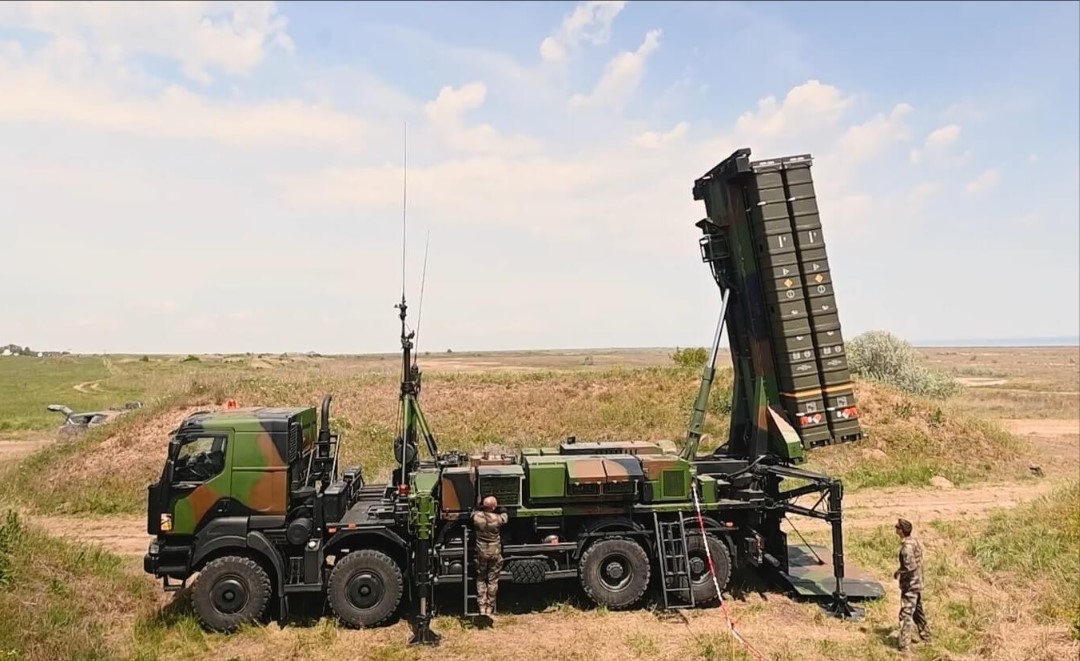World
Defense NewsWorldBelgian Defence has recently made a purchase of six R7 Remotely Operated Vehicles (ROVs) from Exail. These cutting-edge underwater vehicles are set to greatly enhance the capabilities of the Belgian Armed Forces, particularly in the areas of inspecting and disposing of underwater explosive ordnance (EOD), as well as safeguarding harbors, coastal areas, ships, and key infrastructures.Nicolas Astruc, Managing Director of ROV at Exail, expressed gratitude to the Belgian Defence for their trust in selecting the R7 ROV. He highlighted the R7's capabilities in critical infrastructure protection, explosive ordnance disposal, and inspection missions up to 300 meters deep. This acquisition from Belgium, known for its expertise in underwater operations, further validates the R7's effectiveness.According to the Belgian Defence, the introduction of ROV R7s into the Belgian Navy signifies a significant advancement in protecting Belgian waters. These ROVs will be instrumental in tasks such as underwater EOD inspection and removal, as well as ensuring the security of ports, coastal areas, ships, and vital infrastructures. The move reflects the Navy's ongoing commitment to enhancing its capabilities and ensuring the safety of its personnel and the environment they operate in.The R7 ROV is characterized by its cost-efficiency, compact size, and versatility. It is easily deployable and operable from small boats like RHIBs or from the shore. Equipped with a robotic arm and capable of carrying multiple payloads, the R7 is adaptable to a wide range of missions.For EOD neutralization missions, the R7 comes equipped with a special payload featuring a neutralization charge. Its precise positioning is ensured by embedded INS, DVL, and USBL sensors. Additionally, the ROV is equipped with a multibeam sonar and an Orphie 12S camera, facilitating accurate target detection and identification even in challenging conditions.In conclusion, the acquisition of the R7 ROVs by the Belgian Defence signifies a practical step towards bolstering their underwater capabilities. With their advanced features and versatility, these ROVs are expected to play a crucial role in enhancing security and safety in Belgian waters.
Read More → Posted on 2024-04-02 16:35:12Space & Technology
Space NewsWorldNASA's Parker Solar Probe has made a groundbreaking discovery, offering scientists a rare glimpse inside a coronal mass ejection (CME) as it erupted from the sun. These CMEs, massive clouds of plasma, are known to cause both stunning auroras and disruptive effects on electrical grids and satellites when they interact with Earth.(Image credit: U.S. Naval Research Laboratory)The probe's Wide-field Imager for Parker Solar Probe (WISPR) captured clear images of turbulent eddies within the CME. These eddies, known as Kelvin-Helmholtz instabilities (KHI), occur when fast-moving fluid patches interact with each other. Similar phenomena are observed on Earth in cloud formations when there's a difference in wind speed at different ends of a cloud.Solar physicists have long suspected the existence of KHI in CMEs, as plasma within these eruptions moves differently from the background solar wind. However, until now, they lacked the necessary equipment in the right location to observe them directly.According to Evangelos Paouris, a solar physicist at George Mason University, understanding turbulence, which gives rise to KHI, is crucial for comprehending the dynamics of CMEs as they interact with the solar wind.The Parker Solar Probe, launched in August 2018, has been able to venture closer to the sun's corona than any previous spacecraft. Its elliptical orbit has enabled it to come within just 11.5 solar radii from the sun's surface, essentially entering the sun's outer atmosphere.Even now, the Parker Solar Probe has not completed its final orbit. It has utilized gravity assists from Venus to increase its speed and tighten its orbit around the sun. In November of this year, the probe will make its seventh flyby of Venus, further tightening its loop around the sun. This trajectory adjustment will allow it to come within just 9.5 solar radii from the sun in 2025 and beyond.The findings from the Parker Solar Probe provide valuable insights into the mechanisms behind solar storms, aiding scientists in better predicting and understanding these phenomena.
Read More → Posted on 2024-04-02 16:31:10World
Defense NewsRussia Ukraine WarThe Russian military is taking measures to defend ground troops against drone attacks by forming mobile anti-aircraft gun units, as reported by the state-backed Izvestia. These units will be equipped with truck-mounted ZU-23-2 anti-aircraft cannons, providing a cost-effective alternative to guided missiles and rockets commonly used in short-range air defense systems.According to sources cited by Izvestia, each unit will also be outfitted with electronic warfare equipment and smoke production vehicles. These additional assets are intended to disrupt unmanned aerial systems and enhance the effectiveness of the anti-aircraft gun units.The centerpiece of these units is the ZU-23-2 anti-aircraft cannon, which has been in service since the 1960s. This twin-barrel cannon is capable of firing at a rate of up to 2,000 rounds per minute, making it suitable for defending low-moving and stationary targets against aerial threats.Military expert Alexei Leonkov highlighted the versatility of these units, pointing out that existing Shilka complexes, equipped with four twin 23-mm cannons operating as a single unit, can be effectively deployed in this role.By establishing mobile anti-aircraft gun units, the Russian military aims to bolster ground troop defenses against the growing threat posed by drones. These units offer a practical and efficient means of countering drone attacks, ensuring the protection of critical assets and personnel on the ground.
Read More → Posted on 2024-04-02 16:17:26World
Defense NewsU.SIn a recent statement, the Deputy Director of DARPA’s Information Innovation Office, Matt Turek, emphasized the crucial importance of developing trustworthy artificial intelligence (AI) for the U.S. Defense Department. Turek highlighted that about 70% of DARPA’s programs integrate AI, machine learning, and autonomy in various capacities.The urgency stems from the need to stay ahead of potential technological advancements by adversarial forces. Turek stressed DARPA’s commitment to maintaining a competitive edge through strategic advancements of its own.To achieve these objectives, DARPA actively seeks transformative ideas and capabilities from industry and academia, often through competitive challenges where private sector teams compete for substantial monetary prizes. One such example is the DARPA Artificial Intelligence Cyber Challenge, which employs generative AI technologies to identify and rectify vulnerabilities in critical infrastructure’s open-source software.Large language models, a subset of AI, play a pivotal role in enhancing various tasks such as secure coding, decision-making, speech recognition, and predictive analysis. DARPA collaborates with leading large language model providers like Google, Microsoft, OpenAI, and Anthropic to push the boundaries of AI capabilities.Turek emphasized that advancements in large language models would not only benefit the defense sector but also have significant implications for commercial applications.DARPA’s practical implementations of AI include experimentation with autonomy in F-16 fighter jets, demonstrating the real-world applicability of AI technologies.DARPA’s AI research focuses on four key domains: proficient AI, bolstering confidence in the information domain, fortifying secure and resilient systems, and developing defensive and offensive cyber tools. Turek highlighted the synergistic relationship across these research areas, reflecting DARPA’s holistic approach to advancing AI for defense purposes.
Read More → Posted on 2024-04-02 16:07:53India
Defense NewsIndia Astra Microwave Products Limited (AMPL) has clinched a substantial deal with Hindustan Aeronautics Limited (HAL) worth ₹56 crore. This contract entails supplying an advanced Precision Approach Radar (PAR) system, along with a ten-year Annual Maintenance Contract (AMC), highlighting a long-term commitment to bolstering air safety.HAL's decision to invest in this cutting-edge PAR system underscores its dedication to fortifying India's air traffic management infrastructure. Precision Approach Radars are instrumental in ensuring safe aircraft landings, especially during challenging weather conditions or low visibility situations.AMPL's PAR system boasts several key features, including an Advanced Antenna System (AESA) that offers superior accuracy and reliability compared to conventional radar systems. The radar's rugged construction and self-reliant power supply further enhance its operational resilience.Technical specifications of the PAR system include a Frequency Band of X-Band, a Maximum Range of 40 kilometers, and low maintenance requirements, leading to reduced downtime and costs. The incorporation of AESA technology enables precise scanning and rapid adjustments, enhancing overall performance.Moreover, the portability of the system allows for flexible deployment across strategic locations, contributing to its utility in diverse operational scenarios.The significance of AESA technology lies in its improved target detection and tracking capabilities, as well as its resistance to electronic countermeasures and mechanical failures, ensuring enhanced reliability and precision.In conclusion, AMPL's provision of advanced technological solutions aligns with India's aspirations of becoming a prominent aerospace and defence manufacturing hub. This partnership between AMPL and HAL signifies a significant step towards bolstering national security and ensuring the safety of civilian air travel for years to come.
Read More → Posted on 2024-04-02 16:01:16India
Defense NewsIndia & MyanmarIndia has expressed concerns over renewed construction activities observed through satellite images on Myanmar's isolated Great Coco Islands, situated just 55 kilometers north of the strategic Andaman and Nicobar Islands. The Deccan Chronicle reported that there have been previous allegations of the Chinese military using these islands as a listening post to spy on Indian activities.The Andaman and Nicobar Islands fall under India’s only operational tri-services command — the Andaman and Nicobar Command — and host several strategic Naval and Air Force bases.The construction activities on Great Coco Islands are raising alarm in India due to the close relationship between Myanmar’s military junta and China.According to Damien Symon, a geospatial intelligence researcher at the Intel Lab, and John Pollock from Chatham House, recent satellite images indicate a steady makeover of the islands, with signs of military modernization and facilities supporting aircraft. The images reveal the potential for Myanmar to conduct maritime surveillance operations from Great Coco Islands.Visible developments include two new hangars, a new causeway, an accommodation bloc, a lengthened 2,300-meter runway, and a radar station. Land clearing efforts on the southern tip of Great Coco Islands indicate ongoing construction work.In January, Defence Minister Rajnath Singh visited the Andaman and Nicobar Command headquarters in Port Blair to review operational preparedness. This visit marked his first trip to Indira Point since January 2019. He also visited INS Baaz, the southernmost Air Station of the Indian Armed Forces, located at Campbell Bay in Great Nicobar Island.
Read More → Posted on 2024-04-02 14:59:04World
Defense NewsUkraine Russia WarA Ukrainian drone struck Russia's third largest oil refinery on Tuesday about 1,300 km (800 miles) from the front lines, hitting a unit that processes about 155,000 barrels of crude per day though an industry source said the damage was not significant. Russian officials said its jamming devices locked onto a Ukrainian drone near Tatneft's Taneco refinery, which has an annual production capacity of more than 17 million tons (340,000 barrels per day). Pictures from the scene indicated the drone hit the primary refining unit, CDU-7, at the refinery, though the drone appears to have not done serious damage. An industry source who spoke to Reuters on condition of anonymity said the damage to the unit was not critical while the personnel was returning to the plant. A fire broke out at the refinery but was extinguished within 20 minutes, the state news agency RIA said, adding that output had not been disrupted. Ramil Mullin, the mayor of Nizhnekamsk in the Tatarstan region southeast of Moscow where the refinery is located, said there had been no serious damage done. The unit that was hit accounts for around a half of the plant's total annual production capacity. The refinery accounts for about 6.2% of Russia's refining capacity. A military intelligence source in Ukraine, which has been at war with Russia since Moscow began a full-scale invasion of its neighbour two years ago, said in Kyiv that the primary Taneco refining unit had been hit, causing a fire. The source said the aim of the strike was to reduce Russia's oil revenue. Another Ukrainian intelligence source said Ukrainian-made drones also hit a Russian plant producing long-range "Shahed" attack drones, causing "significant damage". Tuesday's attack was one of several in Tatarstan, a highly industrialised region, in the early hours of Tuesday. The Washington Post reported last year that Russia was mass-producing drones at a plant in Tatarstan. RUSSIAN OIL REVENUE TARGETED Ukraine has in recent months begun attacking the oil refineries of Russia, the world's second largest oil exporter, impacting Moscow's highly lucrative trade in refined products, amid extensive Russian missile strikes on Ukraine's energy grid. According to Reuters calculations, around 14% of Russia's refining capacity has been shut down by drone attacks. There is more demand for refined oil products than for Russian crude. The attacks on Russian refineries - many deep inside the world's largest country - have raised concern in Washington about the potential for escalation with Russia, which is the world's largest nuclear power. Ukraine says its drone attacks on Russia are justified because it says it is fighting for survival and has suffered widespread damage from to its infrastructure, including power plants, from Russian air strikes. Ukraine, which says it has been attacked by more than 4,630 Russian long-range Shahed drones during the 25-month-old war, regards its own drone production push as a way to hit back at a much better armed and larger enemy. When asked if Russia thought the United States was involved in the attacks on Russian refineries, the Kremlin said the question was better addressed to the defence ministry and security services. "The Kyiv regime continues its terrorist activity," Kremlin spokesman Dmitry Peskov said. "We and our military are primarily working to minimise this threat, and subsequently to eliminate it." DRONE BATTLE Since President Vladimir Putin sent tens of thousands of troops into Ukraine in 2022, drones have played a big part in the war - either as "kamikaze" attackers or as eyes in the sky that guide in other weaponry to kill soldiers or destroy equipment. Ukraine has carried out a series of high-profile attacks deep inside Russia meant to either undermine Russia's war machine or, as with a 2023 drone strike on the Kremlin, bring the reality of war to the very heart of Russia. A powerful ally of Putin said on Tuesday that NATO was essentially fighting Russia in Ukraine and that the U.S.-led military alliance had helped organise strikes on sovereign Russian territory. Ukrainian sources say Kyiv alone is responsible for the planning and execution of the drone attacks inside Russia. The United States has repeatedly said that it does not support Ukrainian strikes inside Russia. Tuesday's attacks also hit enterprises in Yelabuga and Nizhnekamsk and some people were injured, Tatarstan's regional governor Rustam Minnikhanov said. Two drones struck a dormitory on the territory of the Alabuga Special Economic Zone and at least seven people were injured, Russian media reported.
Read More → Posted on 2024-04-02 14:16:14India
Defense NewsIndia Bharat Electronics Limited (BEL), a leading defence PSU, has announced its provisional and unaudited turnover for the financial year 2023-24, reaching approximately Rs. 19,700 Cr. This marks a notable growth of 13.65% compared to the previous year's turnover of Rs. 17,333 Cr.During the fiscal year, BEL secured orders totaling around Rs. 35,000 Cr, highlighting its continued success in the defence sector. These orders encompass a wide range of products including Electronic Fuzes, EW Systems, Communication Systems for naval warships, Fire Control Systems, Akash Prime Weapon System, Radars, Sonars, Software Defined Radios, Night Vision Devices, Tactical Communication Systems, and projects in the non-defence sector.As of April 1st, 2024, BEL's total order book stands at approximately Rs. 76,000 Cr, reflecting a strong pipeline of projects. Additionally, BEL achieved significant growth in export sales, reaching around US$ 92.98 Million during FY 2023-24, compared to US$ 48.33 Million in the previous year, marking a growth of 92%.Major products exported by BEL include Transmit & Receive (TR) Modules, Compact Multi-Purpose Advanced Stabilisation System (COMPASS), Radar & Electronic Warfare Systems, Medical Electronics, and Communication equipment. As of April 1st, 2024, BEL's export order book stands at USD 407 million, with export orders acquired during the fiscal year amounting to USD 211 million.Shri Bhanu Prakash Srivastava, Chairman & Managing Director of BEL, expressed his satisfaction with the company's performance, emphasizing BEL's commitment to manufacturing excellence across defence and non-defence segments. He highlighted the company's focus on research & development, collaborations with DRDO, academia, and industry partners, and its alignment with the Government's 'Make in India' initiative.Indigenisation, procurement from MSMEs, and participation in Government e-Marketplace (GeM) remain top priorities for BEL, as it continues to explore new growth opportunities through export initiatives, diversification, capability enhancement, competitiveness, and modernisation.
Read More → Posted on 2024-04-02 14:08:29World
Defense NewsJapanThe Japan Maritime and Air Self-Defense Forces recently wrapped up a week-long Tomahawk land attack missile training alongside the US Navy in Yokosuka. The training focused on learning the naval cruise missile curriculum from the US Department of Defense, aiming to enhance coordination in shipboard weapons operations. Participants, including Japanese warfighters, engaged in classroom sessions, walkthroughs, and demonstrations aboard the USS McCampbell (DDG 85) Arleigh Burke-class guided-missile destroyer. They received hands-on training on Tomahawk missile control systems and equipment.The culmination of the training involved a simulation of a generic strike mission, showcasing the acquired skills. Cmdr. Michael Arnold, Officer in Charge of the US Surface Combat Systems Training Command Western Pacific, expressed the significance of the training for Japan's strategic acquisition of the Tomahawk Weapon Control System.US Ambassador to Japan Rahm Emanuel emphasized the importance of maintaining deterrence and operations within the Indo-Pacific region, highlighting the ongoing support and capacity building efforts for allies like Japan.The Tomahawk missile, in service since the 1980s, provides all-weather capability for the US Navy against land-based targets. It boasts a maximum speed of 885 kilometers per hour and can carry various warhead types, enabling engagement at distances ranging from 460 to over 1,600 kilometers.The collaborative training underscores the commitment to a free and open Indo-Pacific region while strengthening the alliance between the US and Japan.
Read More → Posted on 2024-04-02 14:00:06World
Defense NewsGermany German Finance Minister Christian Lindner has outlined potential plans for increased defense spending in the coming years. Speaking to DPA news agency, Lindner stated that if Germany manages to decrease its debt levels below the EU-mandated threshold of 60% of GDP, up to 9 billion euros could be allocated to defense by 2028.The additional funds would be made available by reconsidering the repayment of coronavirus-related debts, currently scheduled to begin in 2028. Lindner emphasized that falling below the 60% debt threshold could prompt a reevaluation of these repayment plans.Germany incurred emergency loans totaling approximately 300 billion euros in response to the COVID-19 pandemic and the conflict in Ukraine. These loans, coupled with the suspension of the debt brake, have strained the country's fiscal position.Lindner highlighted the potential for financial flexibility without altering the debt brake mechanism. He suggested that reducing the debt burden could create room for increased defense spending.The government's current budgetary plans include debt repayments of 9 billion euros annually starting in 2028, with a larger sum of 10.8 billion euros per year from 2031. However, Lindner indicated that if pandemic-related debts are sufficiently mitigated, these repayments could be scaled back, freeing up funds for defense.The goal, according to Lindner, is to align with NATO targets for defense spending, which require member states to allocate at least 2% of GDP to defense. In light of the ongoing conflict in Ukraine, Germany established a special fund of 100 billion euros for modern weapons procurement and pledged to meet NATO's spending target.Looking ahead to 2028, Lindner warned of impending challenges as the special fund's reserves are depleted. To maintain defense spending at the required level, an additional 20 to 25 billion euros may be necessary in the regular defense budget.In sum, Lindner emphasized the potential for increased financial flexibility if debt levels are reduced, presenting a pathway for bolstering defense spending in the future. This strategy builds on previous instances where the government extended debt repayment timelines to create additional fiscal space.
Read More → Posted on 2024-04-02 13:51:49Space & Technology
Technology News WorldWhat is Air Defense Identification Zones (ADIZ) or Air Defense Identification System ?An Air Defense Identification Zone (ADIZ) serves as a designated area in the sky where a country holds control over incoming aircraft for national security purposes. This zone acts as a buffer extending beyond a nation's territorial borders, ensuring the safety of its airspace. Here's a simple breakdown of what an ADIZ does:Purpose:1. Identification: Countries aim to swiftly identify any aircraft entering the ADIZ, regardless of whether they are civilian or military. This allows them to assess potential threats and safeguard their airspace.2. Location: Knowing the whereabouts of all aircraft within the ADIZ is crucial for maintaining situational awareness. This knowledge enables a faster response if needed.3. Control: Countries have the authority to impose restrictions on certain types of aircraft or mandate specific procedures for those flying within the ADIZ.Key Points:1. Not International Law: The concept of ADIZ isn't formally outlined in any international treaty and lacks universal recognition.2. Early Warning System: An ADIZ acts as an early warning system, alerting authorities to potential threats approaching a country's airspace.3. Procedures for Civilian Aircraft: Civilian airlines typically file flight plans that include entering an ADIZ. Additionally, they may need to communicate with air traffic control or military authorities.4. Military Response: In cases where an unidentified aircraft fails to follow prescribed procedures, military jets may be deployed to visually identify it and potentially escort it out of the zone.Example: North American ADIZOne well-known example is the North American Air Defense Identification Zone (NAADIZ), which is jointly managed by the United States and Canada. It covers the airspace surrounding both countries and plays a vital role in maintaining air defense readiness. an ADIZ serves as a proactive measure to safeguard national airspace, ensuring swift identification and response to potential threats.How Air Defense Identification Zones Work ?Air Defense Identification Zones (ADIZ) are crucial components of a nation's airspace security strategy. They function as early warning systems, deterring unauthorized flights, and ensuring orderly air traffic within a designated area.The Players Involved:1. Military: The air force plays a critical role in monitoring and enforcing the ADIZ. They use ground-based radar stations to scan the airspace continuously for any flying objects, including aircraft, missiles, or drones.2. Air Traffic Control (ATC): Civilian ATC coordinates with airlines to ensure flight plans are filed properly, including notifying authorities about entering the ADIZ.3. Civil Aviation Authorities: These authorities establish regulations and procedures for civilian aircraft operating within the ADIZ, including communication protocols and identification procedures.The Process:1. Continuous Monitoring: Military radars scan the ADIZ for any flying objects, gathering information like position, altitude, speed, and direction.2. Identification: Aircraft are identified through filed flight plans, transponder data, or communication attempts.3. Evaluation: Authorities assess the potential threat level based on gathered information.4. Response: If an unidentified aircraft doesn't follow procedures, increased scrutiny, scrambling of jets, or escorting may occur.Importance of ADIZ:1. Early Warning: ADIZ provides valuable time for a country to react to potential threats approaching its airspace.2. Deterrence: The presence of an ADIZ discourages unauthorized flights, enhancing national security.3. Maintaining Order: ADIZ procedures manage air traffic and prioritize national security concerns.Limitations:1. International Recognition: ADIZ isn't universally recognized, leading to occasional tensions when other countries disregard it.2. Enforcement Challenges: The vastness of an ADIZ can make monitoring difficult, and distinguishing between civilian and military aircraft can pose challenges.Overall, ADIZ plays a significant role in safeguarding a country's airspace, ensuring early detection of threats, deterring unauthorized flights, and maintaining order within a designated area.World's First Air Defense Identification Zone During the height of the Cold War in December 1950, the United States took a significant step in bolstering its air defense capabilities by establishing the world's first Air Defense Identification Zone (ADIZ). This move came shortly after President Harry S. Truman declared a national emergency amidst the Korean War.The Cold War era was marked by heightened tensions, particularly concerning potential air attacks from adversaries like the Soviet Union. With the emergence of radar technology, there was a pressing need to distinguish between friendly and hostile aircraft. However, the existing radar systems were not advanced enough to provide definitive identification.To address this gap, the United States implemented the ADIZ concept. By delineating a buffer zone around its airspace, the ADIZ provided crucial additional time to identify incoming aircraft before they entered US airspace. This was particularly important given the evolving nature of aerial threats during the Korean War.The establishment of ADIZ around North America served as a deterrent against potential attacks and ensured a timely response to any approaching aircraft. While not universally recognized by international law, ADIZ has since become a widely adopted practice by many countries seeking to safeguard their airspace.In essence, the creation of ADIZ represented a pragmatic response to the challenges posed by Cold War tensions and the evolving nature of aerial warfare. It underscored the importance of early warning systems and the need for proactive measures to protect national airspace.Limitations of Air Defense Identification Systems: Real-World Incidents Highlight ConcernsAir Defense Identification Zones (ADIZ) play a pivotal role in safeguarding airspace globally. However, recent events underscore the system's vulnerabilities and the need for improvements.1. Korean Air Lines Flight 007 (1983): This incident exposed a major flaw in ADIZ procedures. A commercial South Korean passenger plane strayed into Soviet airspace after a navigational error. Despite warnings from the US ADIZ system, the Soviets failed to properly identify the civilian aircraft and tragically shot it down, resulting in the loss of 269 lives.2. China's East China Sea ADIZ (2013): China's declaration of an ADIZ in the East China Sea created friction with neighboring countries like Japan and South Korea. These countries argued it was an infringement on their airspace and challenged China's authority to enforce it. The incident highlighted the potential for political tensions to arise from overlapping ADIZ claims.3. Malaysia Airlines Flight 370 (2014): This mysterious disappearance of a Malaysian passenger plane showcased the limitations of ADIZ coverage. The flight vanished somewhere between Malaysia and Vietnam, with some speculating it might have flown into a remote area beyond the reach of existing radar coverage. This incident highlighted the need for improved radar and communication technologies within ADIZ zones.4. Russian Incursions into European ADIZ: Russian military aircraft frequently enter the airspace of European countries bordering the Baltics. While most are intercepted and escorted by NATO jets, these incursions test the responsiveness of the ADIZ system and raise concerns about potential military escalations. 5. Drone Threats: The proliferation of drones poses a new challenge to ADIZ systems. Their small size and maneuverability make them difficult to detect, highlighting gaps in traditional air defense measures.These incidents underscore three main limitations of ADIZ systems:Incomplete Coverage: Radar constraints and vast airspace create detection gaps, especially for smaller aircraft and drones.Communication Challenges: Misunderstandings or lack of clear communication between civilian and military authorities can lead to unintended consequences.Political Frictions: Overlapping ADIZ claims fuel tensions between nations, potentially escalating into diplomatic conflicts.Looking ahead, Addressing these limitations is crucial. Advancements in radar technology, enhanced communication protocols, and international cooperation are imperative to bolster the effectiveness of ADIZ systems and ensure comprehensive airspace defense.Future of Air Defense Identification Zones : Advancements and IntegrationIn the realm of air defense, the future holds promising advancements and integration efforts for Air Defense Identification Zones (ADIZ). These zones, crucial for safeguarding airspace, are poised to benefit from technological enhancements and collaboration with other systems.Technological Progress:Enhanced Radar Systems: Upgrades in radar technology are set to improve detection capabilities, allowing for better identification of smaller and faster-moving objects like drones.Improved Communication Networks: With more reliable communication networks, information sharing between military and civilian authorities will become faster, enabling quicker responses to unidentified aircraft.Artificial Intelligence (AI) Integration: AI could play a pivotal role in analyzing radar data in real-time, automating threat assessments, and predicting flight paths, thus expediting decision-making processes.Integration with Other Systems:Satellite Integration: Real-time data from surveillance satellites will complement radar data, providing a comprehensive view of aerial activities within ADIZ.Cybersecurity Measures: As ADIZ systems rely more on digital networks, robust cybersecurity measures will be vital to prevent breaches and ensure system reliability.International Information Sharing: Collaborative initiatives between nations to share information regarding potential threats and suspicious flight patterns will bolster overall air defense capabilities.Potential Replacements for ADIZ?While ADIZ will likely remain fundamental for air defense, emerging technologies offer potential alternatives:Advanced Active Defense Systems: Development of laser and directed-energy weapons could offer means to neutralize drone threats or disable aircraft before entering designated zones, subject to ethical and regulatory considerations.Autonomous Air Defense Systems: Theoretical possibilities include highly automated air defense systems capable of independently identifying and engaging threats, though safety concerns and the risk of miscalculations persist.The future of air defense identification systems will involve a blend of factors. Continued enhancement of ADIZ technology, integration with other systems, and exploration of complementary solutions will be essential in addressing evolving threats in modern air warfare. The overarching aim is to establish a layered and adaptable air defense network, effectively safeguarding airspace while minimizing the risk of unintended escalation.
Read More → Posted on 2024-04-02 06:55:30World
Defense News Israel & IranIran has accused Israel of carrying out an airstrike near its embassy in Damascus, resulting in the deaths of seven members of Iran's Islamic Revolutionary Guard Corps (IRGC), including a top commander. The strike targeted a building adjacent to the Iranian embassy in the Mezzeh area of Damascus, according to footage.Although Israel has not officially commented on the incident, unnamed Israeli officials cited by The New York Times have confirmed the country's involvement in the attack. Iranian media reports suggest that the targeted building was either the consulate or the ambassador's residence.Among the deceased IRGC members was Mohammad Reza Zahedi, a senior commander in the IRGC's Quds Force, designated as a terrorist organization by the US. Zahedi was responsible for overseeing IRGC operations in Syria and Lebanon, as well as maintaining ties with Hezbollah. This marks the most significant killing of an IRGC leader since the assassination of Qasem Soleimani in 2020.Iran has vowed a harsh response to the airstrike, with its ambassador in Syria warning of consequences. Iran's Foreign Minister Hossein Amirabdollahian has held Israel responsible for the attack, condemning it as a breach of international conventions.The strike comes amid escalating tensions between Israel and Iran-backed groups. Israel has conducted numerous airstrikes against Iran-backed militias in Syria over the past decade, aiming to prevent the transfer of arms to groups like Hezbollah. In response to ongoing attacks, Israel has intensified its strikes on Iran-linked targets in Syria, resulting in casualties among IRGC operatives and Hezbollah members.The incident follows a drone attack by an Iran-backed militia in Iraq on an Israeli Navy base in Eilat, causing damage. Shortly after the Damascus strike, the Israeli military announced new operational plans for the Northern Command, amidst repeated attacks by Hezbollah on northern Israel.The IDF has targeted several Hezbollah positions in southern Lebanon in response to continued rocket fire at army bases and Israeli communities along the border.The situation remains tense as both sides brace for potential retaliation and further escalation in the region.
Read More → Posted on 2024-04-02 06:11:40India
Defense NewsIndiaGeopolitical and "security challenges" in the Indian neighbourhood were discussed by the Army's apex leadership in the presence of its top commanders during a conference here on Monday, sources said. The discussions were held at Manekshaw Centre as part of the Army Commanders' Conference, the first for the year 2024.The Army chief, Army vice chief and all Army commanders attended the brainstorming sessions as part of the conference on Monday, a defence source said.The Army Commanders' Conference is being organised in a hybrid mode. The conference was held in virtual mode on March 28 and in physical mode from April 1-2."Geopolitical and security challenges in the Indian neighbourhood" were discussed during the conference, the sources in military establishment said.Defence Minister Rajnath Singh will address the army commanders conference on Tuesday during which the senior military leadership will also assess the overall security situation, the Defence Ministry had said in a statement on March 27.The conference, with its wide scope, ensures the Indian Army remains progressive, forward-looking, adaptive and future-ready, it said.It serves as a "pivotal forum for apex leadership of the Indian Army to brainstorm conceptual issues, review and assess the overall security situation".It will lay down key priorities facilitating important policy decisions to chart the course for future direction, officials had said.The Army's top leadership will engage in intensive brainstorming sessions on April 1. The sessions will be aimed at enhancing operational effectiveness, the importance of fostering a culture of innovation and adaptability and investing in training and development programmes to ensure readiness for future challenges, the statement had said.
Read More → Posted on 2024-04-02 06:02:51World
Defense News UKThales UK has ramped up its production of weapons in response to the ongoing conflict in Ukraine, with operations doubling and expected to double again.The escalation follows Russia’s invasion of Ukraine, prompting the company, a subsidiary of the French Thales Group, to intensify activities at its two Northern Ireland facilities. High-precision missiles, including the Starstreak, Lightweight Multirole Missile (LMM) systems, and assembly of the Saab-designed NLAW, are being produced at its east Belfast plant, with final assembly taking place in Crossgar, Co Down.Thales UK has also contributed to training efforts, preparing both UK and Ukrainian soldiers in the south of England.The Thales Group, operating in 68 countries, spans various sectors, including cybersecurity, aerospace, and defense systems. The Belfast plant’s history with missile production dates back decades, with notable use during the Falklands War in 1982 and later in conflicts such as the Gulf War and Afghanistan. Starstreak missiles were also deployed for the security of the 2012 London Olympic Games and are planned for use in the upcoming Paris 2024 Olympics.The increase in production is directly linked to the need for military aid to Ukraine, with Thales replenishing Starstreak, LMM, and Saab NLAW systems previously procured by the UK Ministry of Defence for assistance to Ukraine.Thales maintains a policy of selling missiles exclusively to governments, under strict licensing agreements for military exports from the UK.
Read More → Posted on 2024-04-02 05:59:10India
Defense NewsIndia Over 1,000 probationary police officers, including 62 deputy superintendents of police, are currently undergoing a six-week long training at the Army’s counter-terror White Knight Corps battle school in Doda district, officials have confirmed. This integrated training program, a first of its kind in the Union Territory, commenced on March 19th.Union Home Minister Amit Shah, in a recent interview, outlined the government's plans to withdraw troops from Jammu and Kashmir, entrusting law and order responsibilities solely to the Union Territory’s police force. "We have plans to pull back troops and leave law and order to the Jammu and Kashmir Police alone. Earlier, the Jammu and Kashmir Police was not trusted but today they are leading the operations," he had stated.The integrated training program aims to enhance coordination and operational capabilities between the police and the Army, both of which have been combating terrorism in the region for over three decades. "The training focuses on operational tactics, intelligence sharing, and counter-terrorism strategies, drawing on the Indian Army’s extensive experience in these fields," a police official explained. This joint effort signifies a continued commitment to security and the well-being of the region’s residents."The valor and sacrifices of both forces have been instrumental in maintaining national security. The synergy achieved during training will pave the way for the restoration of peace and normalcy in Jammu and Kashmir," the official added. Successful counter-terrorism operations in areas like Pulwama and Sopore have not only disrupted terror activities but also restored law and order, contributing to peace and stability.The integrated training program, led by Director General of Police R R Swain and General Officer Commanding (GOC) of White Knight Corps Lt Gen Navin Sachdeva, includes 989 newly inducted sub-inspectors, with 128 female officers among them. Lt Gen Sachdeva expressed confidence that the training would result in enhanced collaboration between the two organizations."The joint training initiative underscores the enduring partnership between the Dhruva Command and White Knight Corps with the Jammu and Kashmir police," the GOC remarked, highlighting their shared vision of a secure and prosperous Jammu and Kashmir.
Read More → Posted on 2024-04-02 05:48:04World
Defense NewsTurkeyThe Bayraktar TB3 marine Unmanned Combat Aerial Vehicle (UCAV) has achieved a significant milestone in its development, with the successful completion of a 27-hour flight during its latest test. Equipped with the advanced ASELFLIR-500 electro-optical system, the UCAV flew a distance of 4600km, demonstrating its cutting-edge technology and engineering.Following the impressive performance of its first prototype, which set a record flight time of 32 hours and covered a distance of 5700km, the Bayraktar TB3 continues to push boundaries in endurance and range capabilities. Designed to operate from short-runway ships like the TCG Anadolu (L400), the UCAV is undergoing tests on a mock runway resembling the ship's deck.Featuring reinforced landing gear, folding wings, and a more powerful engine, the Bayraktar TB3 represents a significant advancement in maritime and aerial warfare technology. Selçuk Bayraktar, Chairman of Baykar, has announced plans for testing aboard the TCG Anadolu (L400) in 2024, signaling a pivotal moment in the integration of unmanned systems in naval operations.With a Maximum Take-Off Weight (MTOW) of 1450 kg and a payload capacity of 280 kg, the Bayraktar TB3 offers improved operational capabilities compared to its predecessor, the TB2. Expected to have a range of 1,000 nautical miles, the TB3 will be equipped with various munitions for engaging surface targets at sea and on land, enhancing the tactical flexibility and strike capabilities of naval forces.The development and upcoming tests of the Bayraktar TB3 highlight the rapid progress in unmanned aerial vehicle technology and its growing importance in modern warfare. As the TB3 prepares for groundbreaking tests aboard the TCG ANADOLU, it sets a new standard in naval and aerial combat operations, solidifying Bayraktar's position as a leader in UCAV innovation.
Read More → Posted on 2024-04-02 05:39:49India
Defense NewsIndia India's efforts to bolster its air defence capabilities have taken a significant leap forward with the advancement of Project Kusha by the Defence Research and Development Organisation (DRDO). This ambitious project aims to develop a homegrown Long Range Surface-to-Air Missile (LRSAM) system, offering a robust solution to tackle long-range aerial threats.Project Kusha: Key FocusProject Kusha is designed to equip the Indian Air Force (IAF) with a potent tool to intercept a wide range of airborne threats, including stealth fighters, conventional aircraft, ballistic and cruise missiles, precision-guided munitions, and unmanned aerial vehicles (UAVs).Key Details:The LRSAM system under Project Kusha is envisaged to have an impressive range of nearly 350 kilometers.It adopts a multi-layered defence strategy, potentially involving at least two new missiles with ranges of 150km and 250km, and potentially a third missile with a maximum reach of 350km.Official sources indicate that Project Kusha has successfully completed its design phase, paving the way for the development and fabrication of crucial components.Progress and TimelineThe project targets completion by 2028-29 for testing and induction into the armed forces, with the development phase expected to commence around 2025-26.Significance of Project KushaProject Kusha reflects India's commitment to enhancing its indigenous defence capabilities. Its success promises to significantly bolster the Indian Air Force's ability to safeguard the nation's airspace, reducing reliance on foreign systems and boosting self-sufficiency in defence.With Project Kusha transitioning from the design phase to development, India's air defence capabilities are poised for a substantial boost. The upcoming years will be critical in witnessing the system materialize, marking a significant milestone for DRDO's technological prowess and India's strategic defence posture.
Read More → Posted on 2024-04-02 05:24:34World
Defense NewsRussia Ukraine WarRussia has used five of its new hypersonic Zircon missiles to attack Kyiv since the start of the year, the city's military administration said on Monday.The attacks are among more than 180 Russian missile and drone attacks launched against the Ukrainian capital in the first three months of the year, the administration said in a post on Telegram.The sea-based Zircon missiles have a range of 1,000 km and travel at nine times the speed of sound, Russia says. Military analysts have said the missiles' hypersonic speed could mean greatly reduced reaction time for air defences and a capability to attack large, deep and hardened targets.President Putin confirmed in his annual state-of-the-nation address on Feb. 29 that Russia had used Zircon missiles in battle, without saying what sites had been targeted. He has described the Zircon as part of a new generation of unrivalled arms systems.
Read More → Posted on 2024-04-02 05:12:08India
Defense NewsIndia & GuyanaGuyana has taken a significant step in strengthening its defense capabilities with the recent arrival of two Dornier 228 aircraft from India. The planes, delivered by Hindustan Aeronautics Limited (HAL), landed at Cheddi Jagan International Airport after being ferried by Boeing C-17 Globemaster military transport planes.This acquisition follows a recent agreement between Guyana and India, with the High Commission of India in Guyana marking the occasion with a social media post. The post highlighted the delivery as part of a Line of Credit from India to Guyana, signaling the beginning of a new chapter in the partnership between the two nations.The delivery of these aircraft comes after Guyana's Finance Minister and the Deputy General Manager of the EXIM Bank of India finalized a loan agreement worth $23.27 million. HAL responded promptly to Guyana's request, delivering the aircraft in record time.The versatile Dornier 228 planes will be utilized by the Guyana Defence Force for maritime patrols and troop transport operations. This move not only enhances Guyana's defense capabilities but also underscores a deepening strategic partnership between Guyana and India.Moreover, India's defense cooperation with Guyana is part of a broader strategy, with similar aircraft previously supplied to regional partners like the Maldives and Sri Lanka.The arrival of these aircraft significantly boosts Guyana's surveillance and logistical capabilities, potentially impacting regional security in the Caribbean. This development opens avenues for further collaboration between Guyana and India in the defense sector, demonstrating a commitment to mutual interests and security objectives.
Read More → Posted on 2024-04-02 05:06:41World
Defense NewsFrance & UkraineFrance has announced its decision to provide Ukraine with an additional batch of Aster 30 air defense missiles, as revealed by Sébastien Lecornu, the French Minister of Defence, in an interview with "La Tribune" newspaper. These missiles are part of the SAMP/T air and missile defense system, initially supplied to Ukraine by Italy and France.This support comes amidst a critical period for Ukraine, which is facing relentless missile attacks from Russia. The decision to offer further military aid was made public on March 31st, following a week marked by severe Russian missile strikes on Ukrainian territory. These strikes inflicted significant damage to the country's energy infrastructure, employing a mix of drones, cruise missiles, and ballistic missiles.The challenge of countering such ballistic missile threats is a pressing concern for the Ukrainian Armed Forces, who are grappling with a shortage of effective air defense systems. Presently, only the PATRIOT and SAMP/T systems, provided by Western nations, possess the capability to engage these threats. However, reports indicate that the missile arsenal for these systems is dwindling, compounded by the recent loss of two PATRIOT system launchers in precision attacks by Russian forces.The additional delivery of Aster 30 missiles by France aims to fortify Ukraine's defensive capabilities, enabling them to better counter ballistic missiles and aerodynamic targets over distances exceeding 100 km. The SAMP/T system, armed with Aster 30 missiles, is designed to engage hostile aircraft within a range of 3 km to over 100 km and ballistic missiles within a range of 3 km to 25 km, at altitudes up to 25 km.The Aster 30 missile specifications include a weight of 450 kg (990 lb), a length of 4.9 m (16 ft), a diameter of 180 mm (7.1 in), and a speed of Mach 4.5. It boasts a maximum intercept altitude of 18 km (60,000 ft) and is equipped with a two-stage design comprising a solid propellant booster and ramjet motor. Additionally, it features aerodynamic controls, thrust vectoring, and an active radar seeker for terminal guidance in all weather conditions. These missiles are seamlessly integrated into various air defense systems, enhancing their effectiveness in safeguarding against aerial threats.
Read More → Posted on 2024-04-02 05:00:16Search
Top Trending
-
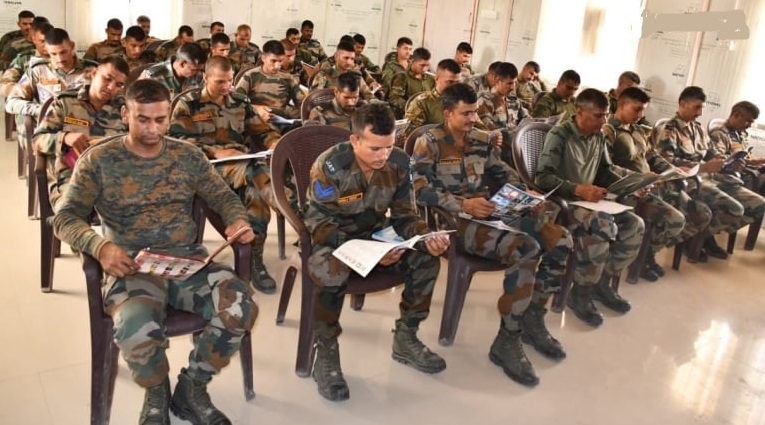 Agneepath Scheme replaced with Sainik Samman Scheme 2024, Defence Minister Rajnath Singh Relaunched Agniveer Scheme
Agneepath Scheme replaced with Sainik Samman Scheme 2024, Defence Minister Rajnath Singh Relaunched Agniveer Scheme
-
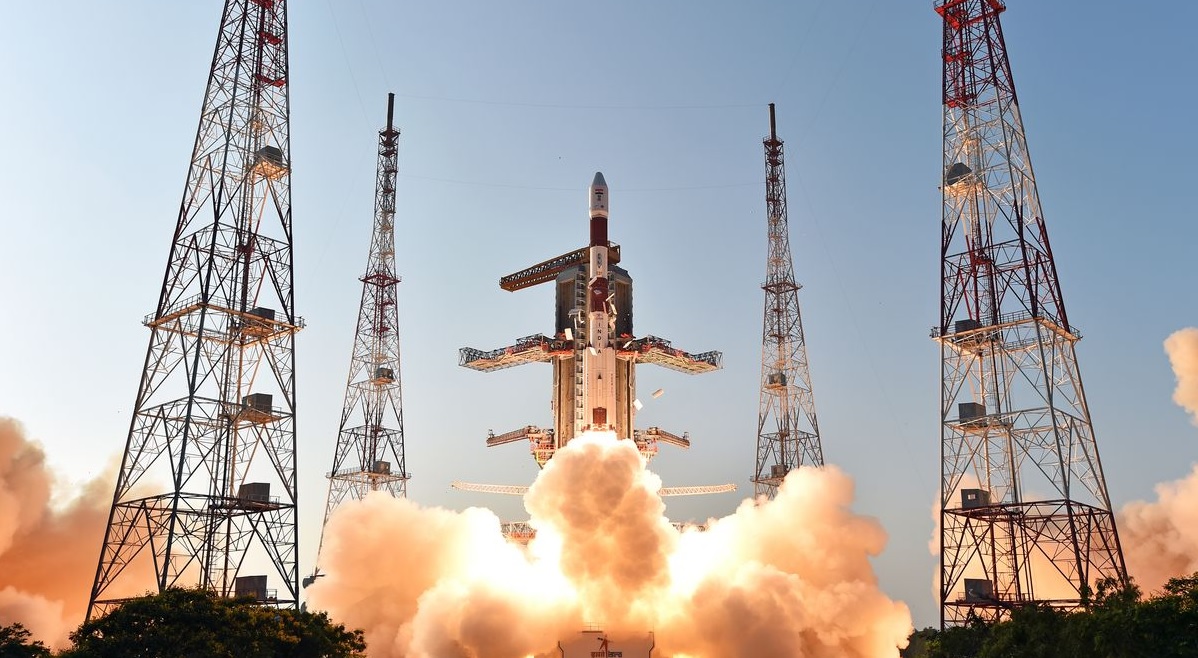 Isro Draws up Ambitious Plan for 2024, says will Launch at Least 12 Missions
Isro Draws up Ambitious Plan for 2024, says will Launch at Least 12 Missions
-
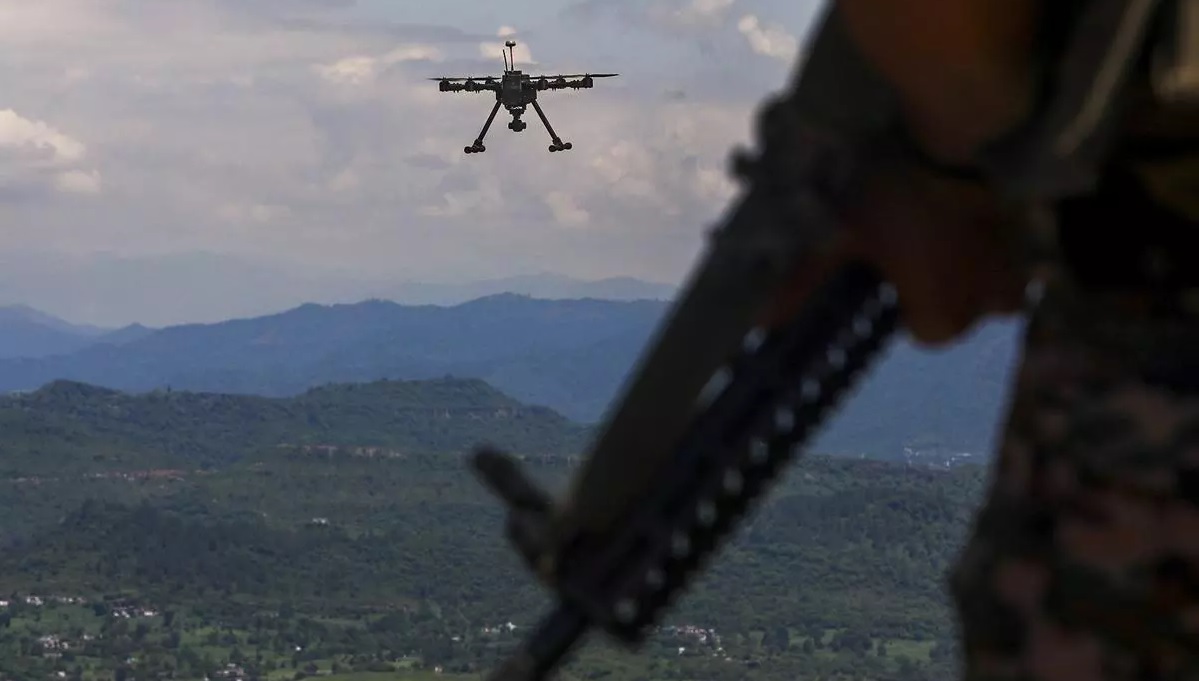 India's Defence Ministry Warns Against Chinese Parts in Military Drones Amid Security Concerns
India's Defence Ministry Warns Against Chinese Parts in Military Drones Amid Security Concerns
-
 China’s Super Radar Detects Mysterious Plasma Bubble Over Giza Pyramids
China’s Super Radar Detects Mysterious Plasma Bubble Over Giza Pyramids
-
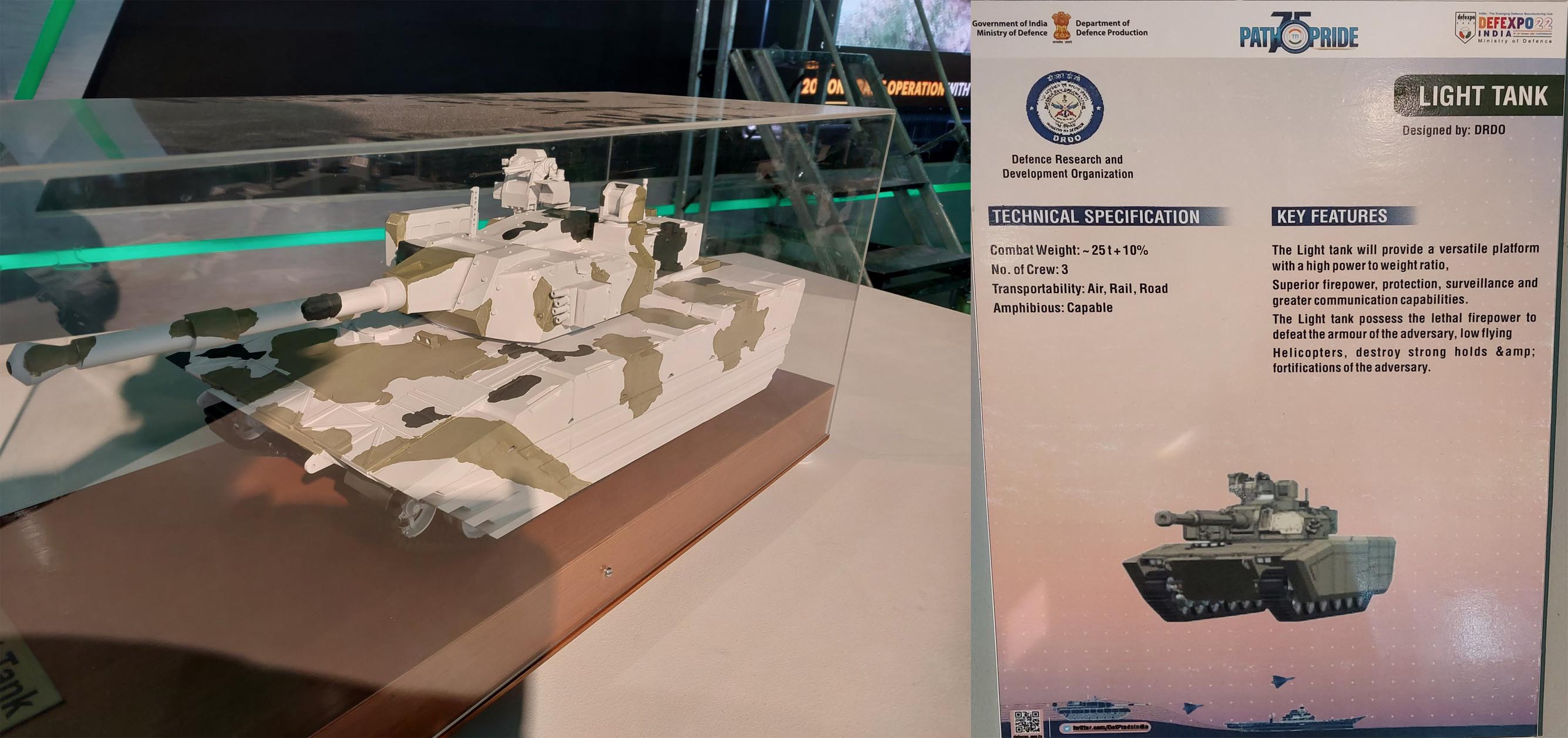 German Engines Available Now But India Chooses American Power Plants for Entire Zorawar Light Tank Project
German Engines Available Now But India Chooses American Power Plants for Entire Zorawar Light Tank Project
-
 Pakistan Announces 15% Increase in Defence Budget for 2024-25 Amid Economic Crisis
Pakistan Announces 15% Increase in Defence Budget for 2024-25 Amid Economic Crisis
-
 India's Indigenous Kaveri Engine Program with New Focus on Thrust and Performance
India's Indigenous Kaveri Engine Program with New Focus on Thrust and Performance
-
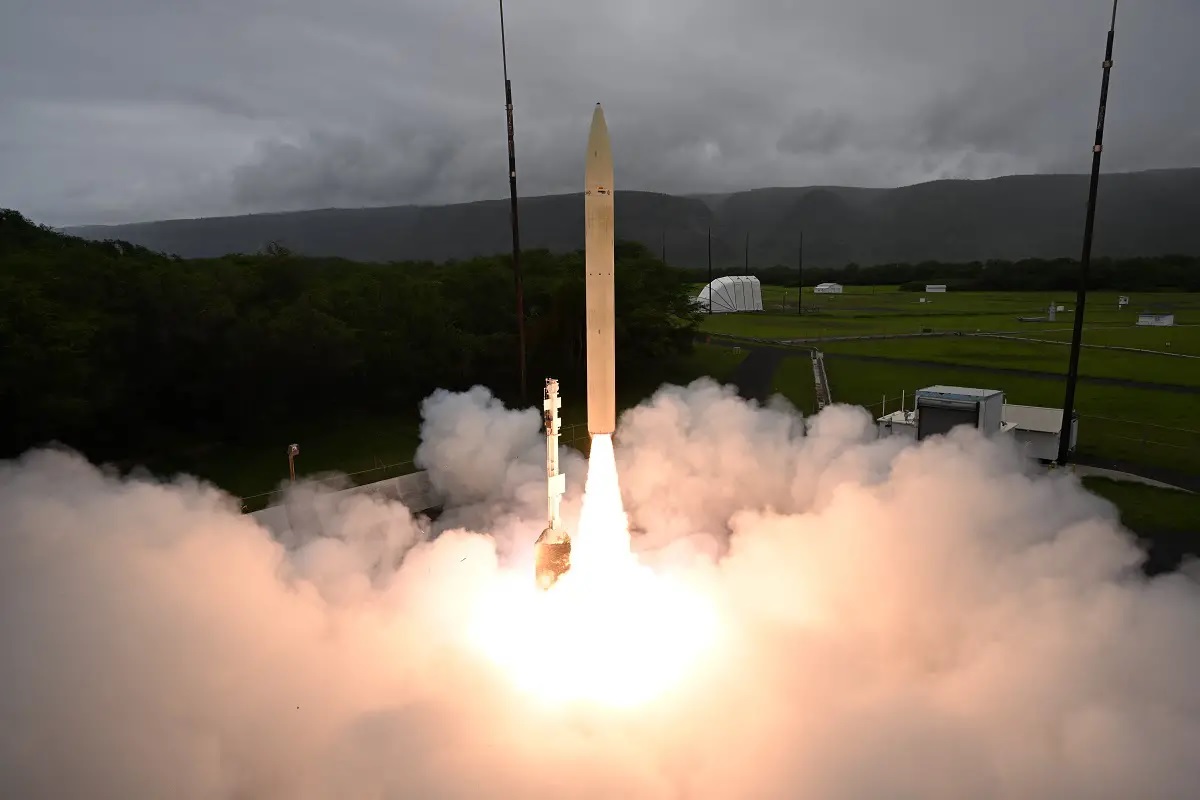 Successful Hypersonic Missile Test by U.S. Department of Defense
Successful Hypersonic Missile Test by U.S. Department of Defense
Top Trending in 4 Days
-
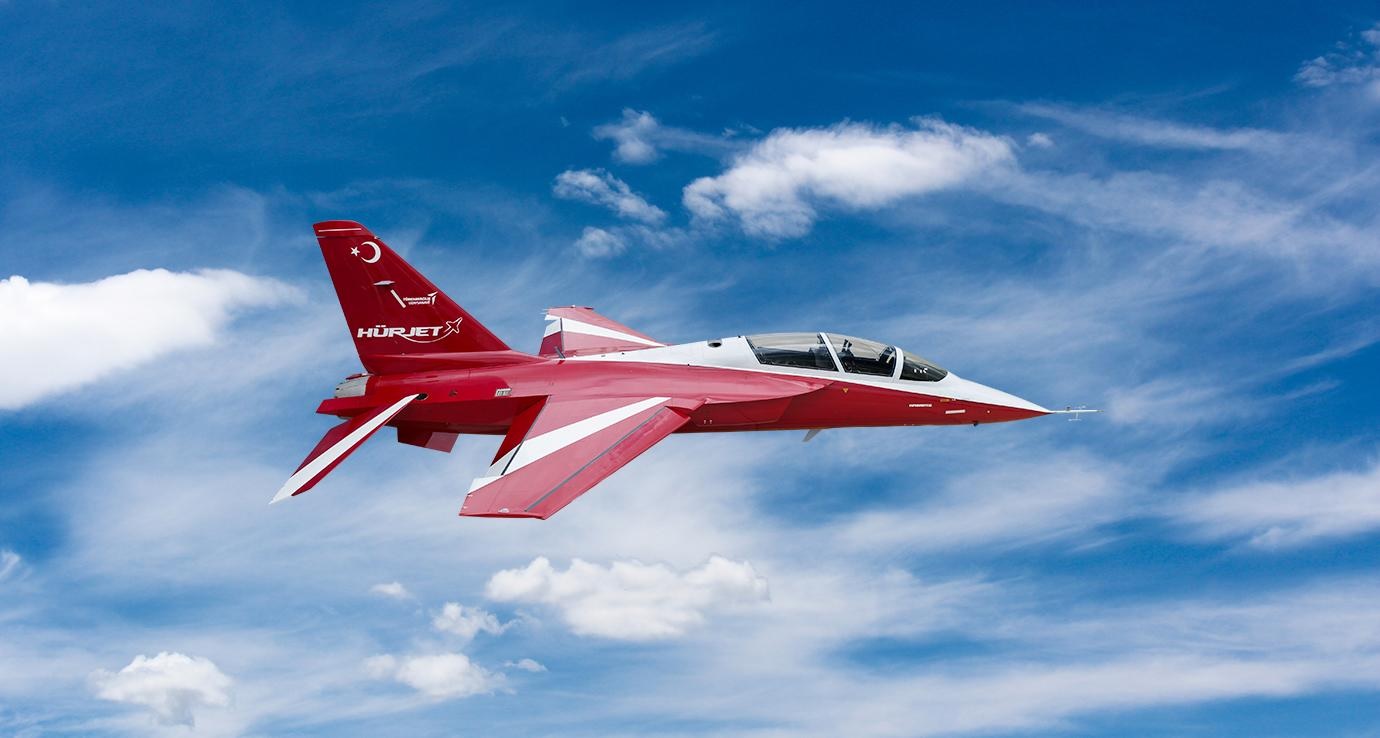 Turkey Seeks US Approval to Acquire GE Engine for Hurjet Fighter Jet
Turkey Seeks US Approval to Acquire GE Engine for Hurjet Fighter Jet
-
 Earth will Get a Second Moon Temporarily This Month—But It Won’t Stay Long
Earth will Get a Second Moon Temporarily This Month—But It Won’t Stay Long
-
 Satellite Tracker Captures Rare Images of Secret U.S. Spy Satellites
Satellite Tracker Captures Rare Images of Secret U.S. Spy Satellites
-
 How Turkey’s Order of F404 Engines Could Accelerate India's Tejas Mk1A Deliveries
How Turkey’s Order of F404 Engines Could Accelerate India's Tejas Mk1A Deliveries
-
 Japan Coast Guard to Build its Largest Patrol Vessel Ever: A 30,000-Ton Maritime Giant
Japan Coast Guard to Build its Largest Patrol Vessel Ever: A 30,000-Ton Maritime Giant
-
 TEJAS MK-1A Fighter Jet Delivery Delayed by Danish Export Blacklist: HAL’s Race to Indigenize Critical Component
TEJAS MK-1A Fighter Jet Delivery Delayed by Danish Export Blacklist: HAL’s Race to Indigenize Critical Component
-
 GE to Retain Key F-414 Engine Technology in Transfer Deal with India: What This Means for HAL and Indigenous Production
GE to Retain Key F-414 Engine Technology in Transfer Deal with India: What This Means for HAL and Indigenous Production
-
 India's Next Leap in Space: Cabinet Approves Development of Next-Gen "SOORYA" Satellite Launch Vehicle
India's Next Leap in Space: Cabinet Approves Development of Next-Gen "SOORYA" Satellite Launch Vehicle
